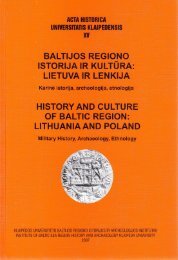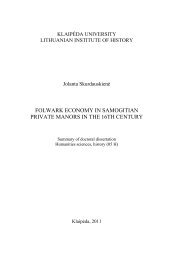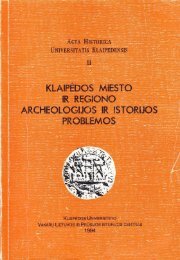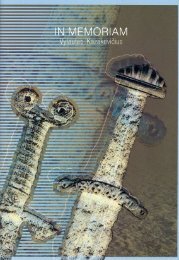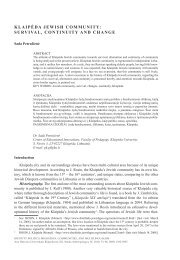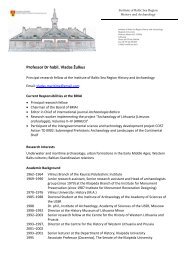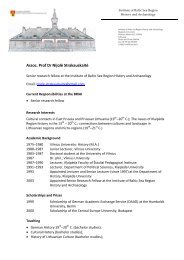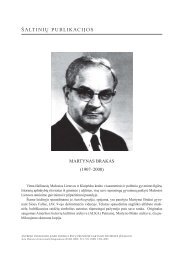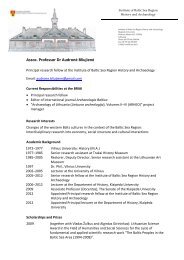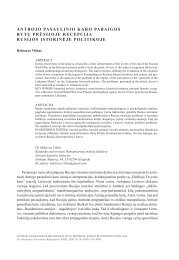university of klaipėda lithuanian institute of history roman širouchov ...
university of klaipėda lithuanian institute of history roman širouchov ...
university of klaipėda lithuanian institute of history roman širouchov ...
You also want an ePaper? Increase the reach of your titles
YUMPU automatically turns print PDFs into web optimized ePapers that Google loves.
case <strong>of</strong> mould clay, hand-made vessels) and B:1-2a,b types for vessels<br />
produced on slowly rotating wheel (so named Baltic ware). Vessels<br />
occurred in both Prussian and Curonian cemeteries correspond mostly<br />
to the ware occurred in settlements. If the amount <strong>of</strong> hand-made vessels<br />
in Prussian and Curonian settlements has remained quite large, the<br />
situation is very different in use <strong>of</strong> pottery and especially <strong>of</strong> Baltic ware<br />
in Prussian and Curonian cremation cemeteries. Thus only vessels<br />
made on slowly rotating wheel or their potsherds were found in 50-80%<br />
<strong>of</strong> Prussian cremation graves <strong>of</strong> the 11 th -13 th centuries in contrast to the<br />
all types potsherds found only in 10-30% <strong>of</strong> the same period Curonian<br />
cremations.<br />
I.5. Arms, their types and statistics in Prussian and Curonian<br />
cemeteries <strong>of</strong> the 11 th –13 th centuries<br />
20<br />
Situation with arms in Prussian and Curonian area in the 11 th -<br />
13 th centuries is similar in general.<br />
Comparing Northern Prussian and South Curonian statistics <strong>of</strong><br />
graves with arms, it should be noted that in Prussian area they occurred<br />
from 8 to 81% (37% at average) <strong>of</strong> all graves number, although in<br />
many cases they exceed 50%, while the Curonian cremation graves<br />
with arms <strong>of</strong> the same time period makes from <strong>of</strong> 5 up to 67% (32% on<br />
average). This means that graves with arms occurred in Prussian ceme-<br />
teries, ignoring too heavy destroyed cemeteries, a bit more <strong>of</strong>ten than<br />
those in Curonian ones.



